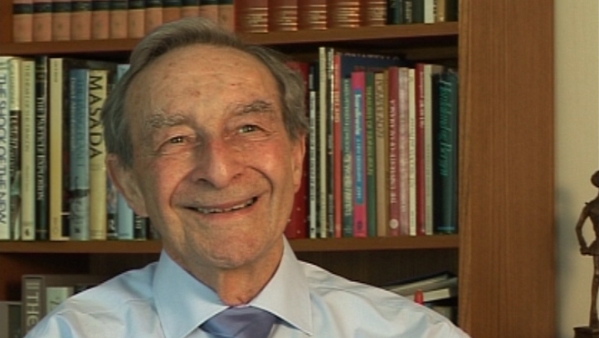NEXT STORY

Our experiments to measure the different boron hydrides
RELATED STORIES

NEXT STORY

Our experiments to measure the different boron hydrides
RELATED STORIES


|
Views | Duration | |
|---|---|---|---|
| 181. Deciding to give up my work in Mössbauer spectroscopy | 44 | 02:09 | |
| 182. Boron hydride problems: how to measure reactions? | 44 | 04:15 | |
| 183. Our experiments to measure the different boron hydrides | 39 | 02:39 | |
| 184. Opening up the metalloborane compound field | 43 | 02:36 | |
| 185. Working with stable metalloboranes | 41 | 01:07 | |
| 186. Creating conjuncto-boranes | 45 | 01:50 | |
| 187. Other responsibilities of being Head of Department | 32 | 01:23 | |
| 188. Open days | 28 | 02:02 | |
| 189. The first open day at Leeds University | 33 | 02:42 | |
| 190. Deciding who discovered each element | 41 | 06:33 |


On the reactions of the boranes I asked Bob Greatrex to come with me. He had been doing Mössbauer work so he was very used to deconvoluting curves. In fact Terry Gibb helped us with the project that I’m about to tell you about and it’s an amusing transference of an idea from one area to another. Nothing could be further apart than solid state nuclear chemistry at liquid helium temperature on the one hand, and the gas phase thermolysis of reactive boron hydrides on the other. But there is a connection. How do you follow rapid reactions which are going on in the gas phase amongst – and I have to say it unblushingly – the most complex atmospheric gas phase several reactions that had ever been examined? It’s alright taking A and B and mixing them and seeing what happens. You can do that in the gas phase, or you can have A which decomposes to B, decomposes to C. That can be followed. But suppose you start with A which decomposes to B and C, and B and C react with A and with each other to give D and E and F literally, perhaps at least half a dozen, probably more, main species all going on in the gas phase, all colourless, all non-magnetic. In fact it reminds me once of talking with your colleague, Jack Lewis. I’d been at a lecture once of his and I said, ‘All this transition element work, beautiful work with magneto-chemistry, crystallography and so forth, how would you study a colourless gas which was non-magnetic and so on’, and he said, ‘I wouldn’t. It’s not for my techniques’.
So the thing is this. I devised a way of looking at this. As you know high resolution spectroscopy [sic] will give you a precise mass measurement of a species in the gas phase. If it was a simple compound with one isotope in each that is very easy. You’ve got A and B, put them together is AB. That’s the sum of the masses. The mass spectrometer will measure it and it will tell you precisely that it is that. Now, in terms of the problem that I’m talking about you haven’t got that situation. You’ve got boron who... that has two isotopes, boron-10 and boron-11. If you have species which have two borons, three, four, five and six not to say 10 boron atoms in them, you have an isotopic random mixture of boron-10 and boron-11 so there is a mixture of that. If you’re doing this at unit mass resolution, you can’t tell, but boron-10 is not exactly one unit less than boron-11; it’s just fractionally different for all the nuclear reasons that you would understand. So you can tell which each peak is if you can get it at high enough resolution and get the precise mass. That’s the first thing. The second thing is, not only does boron-10 differ by one from boron-11, but boron-10 with one hydrogen has got almost the same as boron-9.
Norman Greenwood (1925-2012) was born in Australia and graduated from Melbourne University before going to Cambridge. His wide-ranging research in inorganic and structural chemistry made major advances in the chemistry of boron hydrides and other main-group element compounds. He also pioneered the application of Mössbauer spectroscopy to problems in chemistry. He was a prolific writer and inspirational lecturer on chemical and educational themes, and held numerous visiting professorships throughout the world.
Title: Boron hydride problems: how to measure reactions?
Listeners: Brian Johnson
Professor Brian FG Johnson FRS, FRSE, FRS Chem, FAcad Eu, FAS. Professor of Inorganic Chemistry University of Edinburgh 1991-1995, Professor of Inorganic Chemistry University of Cambridge 1995-2005, Master Fitzwilliam College Cambridge 1999-2005. Research interests include studies of transition metal carbonyls, organometallic chemistry, nano- particles and homogeneous catalysis. Professor Johnson is the author of over 1000 research articles and papers.
Tags: Mössbauer spectroscopy, Bob Greatrex, Terry Gibb, Jack Lewis
Duration: 4 minutes, 15 seconds
Date story recorded: May 2011
Date story went live: 25 November 2011